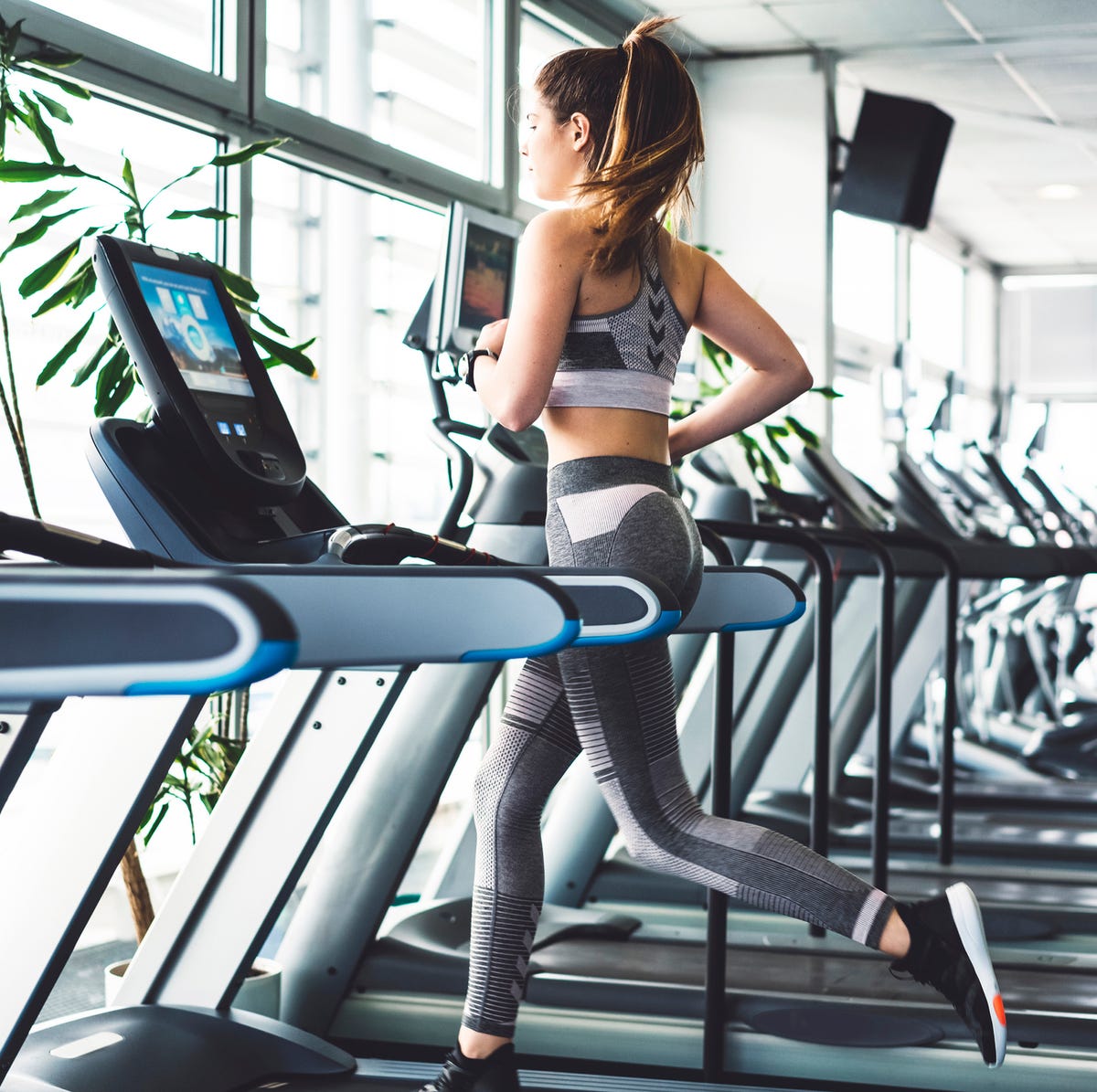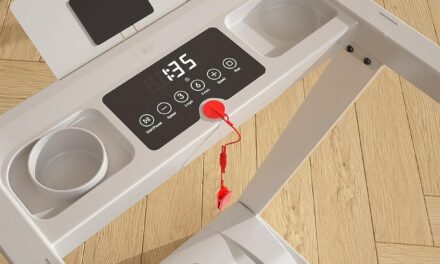Are you new to running on a treadmill and not sure where to start? Look no further! In this article, we will guide you through the basics of how to run on a treadmill. Whether you are a beginner or just need a refresher, we have got you covered. From proper form and posture to setting the right speed and incline, we will provide you with all the tips and tricks you need to get the most out of your treadmill workouts. Let’s lace up our shoes and get ready to conquer the treadmill together!
How to Run on a Treadmill: A Comprehensive Guide
Welcome to Fit Gear Gurus’ comprehensive guide on how to run on a treadmill! Whether you’re a beginner or a seasoned runner looking for some tips, we’ve got you covered. Running on a treadmill can be a convenient and effective way to stay fit, and with the right setup, warm-up routine, running form, and training strategies, you can make the most out of your treadmill sessions. So let’s dive in and get started!

This image is property of www.johnsonfitness.com.
1. Setting Up the Treadmill
1.1 Adjusting the Incline
Before you begin your run, it’s important to set the right incline on your treadmill. Adjusting the incline mimics outdoor terrain and adds intensity to your workout. Start with a slight incline of around 1-2% to engage your muscles and make your run more challenging. As you progress, you can increase the incline gradually to target specific muscle groups and vary your workout routine.
1.2 Adjusting the Speed
Next, you’ll want to adjust the speed of the treadmill according to your fitness level and goals. If you’re a beginner, start with a comfortable speed and gradually increase it as you feel more confident and comfortable. For experienced runners, you can set a brisk pace to challenge yourself. Remember to always listen to your body and adjust the speed accordingly.
1.3 Programming Your Workout
Many treadmills offer programmable features that allow you to create customized workouts. This can be a great way to incorporate interval training or set specific time, distance, or calorie goals. Take advantage of these features to add variety and structure to your treadmill workouts.
1.4 Wearing Proper Clothing and Shoes
Before you step onto the treadmill, make sure you’re wearing the right clothing and shoes. Opt for moisture-wicking, breathable fabrics that will keep you cool and comfortable during your run. Choose running shoes that provide adequate support and cushioning to protect your feet and reduce the risk of injury. Remember to tie your shoelaces securely to prevent any accidents.
2. Warm Up Before You Start
2.1 Dynamic Stretches
Before hopping onto the treadmill, it’s important to warm up your muscles with dynamic stretches. Dynamic stretches involve continuous movements that help increase blood flow and flexibility. Perform exercises like leg swings, arm circles, walking lunges, and high knees to prepare your body for the upcoming workout.
2.2 Walking Warm-Up
Once you’ve completed your dynamic stretches, start with a walking warm-up on the treadmill. Set a comfortable pace at a lower speed and gradually increase it as you warm up. Walking for 5-10 minutes at an easy pace will help raise your heart rate and loosen up your muscles before transitioning into a run.
2.3 Slow Jog
After your walking warm-up, transition into a slow jog to further warm up your body and get it ready for more intense activity. Maintain a steady pace that allows you to have a conversation without losing your breath. This slow jog will help elevate your heart rate and prepare your muscles for the upcoming run.
This image is property of hips.hearstapps.com.
3. Proper Running Form
3.1 Posture
Maintaining good posture is essential while running on a treadmill. Stand tall, keeping your head up, shoulders relaxed, and core engaged. Avoid leaning forward or slouching as this can put unnecessary strain on your spine. By maintaining proper posture, you’ll optimize your running efficiency and reduce the risk of injury.
3.2 Stride Length
Striking the right balance with your stride length is crucial for a smooth and efficient run. Avoid overstriding, which is when your feet land too far in front of your body. Instead, aim for a slightly shorter stride that allows your feet to land beneath your body, minimizing impact and promoting a more natural gait. This will help reduce strain on your joints and improve your overall running form.
3.3 Foot Strike
There are three primary foot strikes: heel strike, midfoot strike, and forefoot strike. While each has its own advantages and disadvantages, it’s generally recommended to aim for a midfoot or forefoot strike when running on a treadmill. These foot strikes promote a more efficient transfer of energy and minimize the risk of injuries associated with a heavy heel strike.
3.4 Arm Swing
Pay attention to your arm swing while running on a treadmill. Keep your arms relaxed, maintaining a 90-degree angle at the elbow. Avoid crossing your arms in front of your body and instead, let them swing naturally and parallel to your torso. Engaging your arms in a coordinated motion with your legs will improve your overall running form and help propel you forward.
3.5 Breathing Technique
Proper breathing technique is important to ensure you have enough oxygen to sustain your run. Breathe deeply and rhythmically, inhaling through your nose and exhaling through your mouth. Try to synchronize your breathing with your strides, inhaling for two or three steps and exhaling for the same number of steps. This technique will help you maintain a steady rhythm and minimize feelings of breathlessness.
4. Start with a Comfortable Pace
4.1 Finding Your Base Pace
When starting your run, find a comfortable pace that allows you to maintain a conversation without feeling too breathless. This is your base pace, and it should serve as a starting point for your workout. If you’re unsure of your base pace, start with a slower speed and gradually increase it until you find a pace that challenges you but doesn’t leave you completely exhausted.
4.2 Gradually Increasing Speed
As you progress through your treadmill workout, you can gradually increase your speed to make it more challenging. Aim to increase the speed by small increments, such as 0.1-0.2 mph, every few minutes. This progressive increase in speed will help you build endurance and push your limits over time.

This image is property of i.ytimg.com.
5. Monitoring Your Heart Rate
5.1 Using Heart Rate Monitors
Monitoring your heart rate is a great way to gauge the intensity of your treadmill workout and ensure you’re in your target heart rate zone. Heart rate monitors, both external devices and built-in treadmill sensors, can provide real-time feedback on your heart rate. This information can help you adjust your speed or incline to reach your desired training goals.
5.2 Target Heart Rate Zones
Understanding your target heart rate zones can help you optimize your treadmill workouts. There are different zones, including the fat-burning zone, aerobic zone, and anaerobic zone. Each zone corresponds to different heart rate ranges and offers specific benefits. Consult with a fitness professional to determine your target heart rate zones and tailor your workouts accordingly.
6. Utilizing Interval Training
6.1 Benefits of Interval Training
Interval training involves alternating between periods of high-intensity exercise and active recovery. It’s an effective way to improve cardiovascular fitness, burn more calories, and enhance overall performance. On a treadmill, you can incorporate interval training by increasing the speed or incline for a set time, followed by a period of lower intensity or rest.
6.2 Setting Up Interval Workouts
To implement interval training on a treadmill, start with a warm-up, then alternate between high-intensity intervals and active recovery periods. For example, you might sprint at a challenging pace for 30 seconds, followed by a one-minute recovery jog. Repeat this pattern for a specific number of sets or time duration. Adjust the speed and incline to suit your fitness level and goals.

This image is property of i.ytimg.com.
7. Incorporating Incline Training
7.1 Benefits of Incline Training
Running on an incline on a treadmill can simulate running uphill and offer numerous benefits. Incline training engages more muscles, increases calorie burn, and strengthens your lower body. It also improves your running form by promoting a forward lean and reducing the impact on your knees and joints.
7.2 Adjusting Incline Levels
When incorporating incline training, gradually increase the incline level on your treadmill. Start with a moderate incline of around 3-5% to mimic outdoor conditions. As you become more comfortable, you can increase the incline incrementally to make your workout more challenging. Remember to listen to your body and maintain proper form as you tackle steeper inclines.
8. Listening to Music or Watching TV
8.1 Creating the Right Playlist
Listening to music while running on a treadmill can provide motivation and help you stay focused. Create a playlist of upbeat, energizing songs that keep you motivated throughout your workout. Choose songs with a tempo that matches your desired running pace or use curated running playlists available on various music streaming platforms.
8.2 Using Audio/Video Entertainment
If music isn’t your preference, you can also watch TV shows, movies, or documentaries while running on a treadmill. Some treadmills come with built-in screens or holders for tablets and smartphones, making it easy to enjoy your favorite entertainment. However, ensure that the entertainment doesn’t distract you from maintaining proper form and focusing on your workout.

This image is property of runningmagazine.ca.
9. Cool Down and Stretch
9.1 Slow Down Your Pace
After completing your treadmill workout, it’s crucial to cool down and gradually decrease your pace. Slow down your speed gradually, allowing your body to transition from a higher intensity to a lower intensity. This gradual decline will help prevent dizziness and allow your heart rate and breathing to return to normal.
9.2 Static Stretches
Once you’ve cooled down, it’s time to perform static stretches to improve flexibility and prevent muscle soreness. Focus on stretching your major muscle groups, including your calves, hamstrings, quadriceps, and hip flexors. Hold each stretch for 15-30 seconds without bouncing and remember to breathe deeply. This will help relax your muscles and aid in their recovery.
10. Proper Maintenance and Safety
10.1 Cleaning the Treadmill
Regularly cleaning your treadmill will ensure its longevity and hygienic use. Wipe down the surfaces, including the console, handrails, and belt, with a gentle, non-abrasive cleaner after every use. Pay attention to the belt area, removing any dust or debris that may accumulate. Additionally, lubricate the belt as recommended by the manufacturer to maintain smooth and quiet operation.
10.2 Safety Tips
When running on a treadmill, it’s important to prioritize safety to prevent accidents or injuries. Always start with a warm-up and gradually increase your speed and intensity. Maintain proper form and posture throughout your workout to minimize strain on your body. If you feel dizzy, lightheaded, or experience any pain, stop immediately and seek medical advice if necessary.
10.3 Using Safety Features
Most treadmills come with built-in safety features, such as an emergency stop button or a safety clip attached to your clothing. Familiarize yourself with these features and use them when needed. The emergency stop button can quickly halt the treadmill if you lose balance or encounter any issues. Similarly, the safety clip can detach and stop the machine if you accidentally stumble or fall.
Running on a treadmill can be an enjoyable and effective way to improve your fitness level and achieve your running goals. By following these comprehensive guidelines, you’ll not only optimize your treadmill workouts but also ensure your safety and maintain your equipment properly. So lace up your running shoes, step onto the treadmill, and embrace the wonderful world of indoor running! Happy running!






